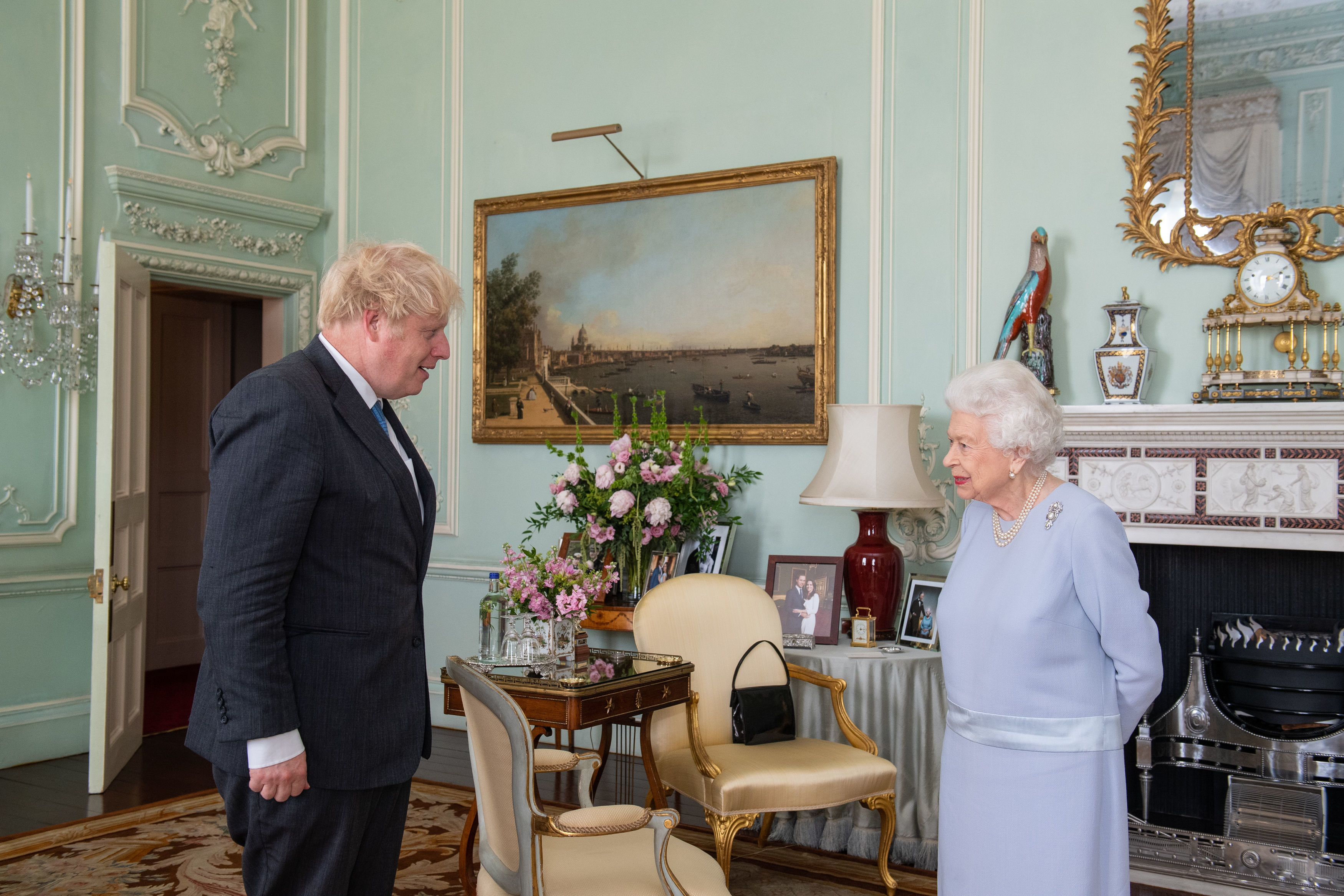Can the Queen sack the Prime Minister and has a monarch fired one before?


Amidst the lockdown partygate scandal, members of the public are wondering if the Queen can sack Prime Minister Boris Johnson.
It's been a tough new year for the Tories. The first two months of 2022 saw the Conservative government deal with the after-effects of the illegal lockdown parties scandal. The findings were later published in the Sue Gray report in late May - which investigated one such party which took place just days before Prince Philip's funeral. Further drama arose in July when several ministers resigned from Boris Johnson's government.
The fall-out from the ongoing events has led to much criticism and growing anger from voters nationwide. And much like many have also asked can the monarch call a general election, people are also keen to know what the Queen's powers are when it comes to dismissing a Prime Minister.
Can the Queen sack the Prime Minister?
The Queen is responsible for appointing Prime Ministers, and whilst Queen Elizabeth II does have the power to sack the Prime Minister, it is highly unlikely that she would ever exercise it. This is because Her Majesty's role in government is mostly a ceremonial one. And as Head of State, she also has to appear politically neutral and not seen to be favouring one party over another.
"The Queen’s powers rest on convention," Vernon Bogdanor, professor of government at King’s College London told the Guardian. "She’s got quite wide legal powers but in a constitutional monarchy she shouldn’t use them except in very extreme circumstances, which I don’t think these would be.
"During her reign she has acted throughout on the advice of her prime minister and it has proved a good rule. If parliament is unhappy with anything, it is for parliament to take the relevant actions."

The only occasion where the Queen is likely to sack a prime minister is if they refuse to leave after losing a Vote of No Confidence in the Commons. This being said, there would have to be a clear successor with a majority backing in parliament who would be ready to take over power. Her Majesty is unlikely to fire someone without a valid replacement lined up.
Parenting advice, hot topics, best buys and family finance tips delivered straight to your inbox.
Who was the last British monarch to sack a British prime minister?
It is incredibly rare for a British monarch to sack the Prime Minister. In fact, the last example of this happening was in 1834 - when King William IV dismissed Lord Melbourne. The King asked Sir Robert Peel to form a new government following worries around Lord Melbourne's government. Known as the Whig administration, they were considered popular, extremist and a threat to the monarchy.
Though Peel did form a new government, he found passing legislation hard and resigned in 1835. King William VI then had no other choice but to re-instate Lord Melbourne as the prime minister.
How else can a UK Prime Minister be removed?
If a Prime Minister does not resign, then a Vote of Confidence against the leader could take place. This is an alternative which could see the head of government removed. In order to trigger this in the current political climate, Conservative MPs would have to submit letters to the party's 1922 committee chairman. And if the total of letters received adds up to 15% of all sitting Tory MPs (in this case 54) then a Vote of No Confidence takes place.
The concept is part of the Fixed Term Parliaments Act 2011. Once a no confidence motion is approved, all elected MPs from all parties in the Commons must come together to vote for or against the sitting government. With the exact wording being: "That this House has no confidence in Her Majesty's Government."
A majority vote is needed to pass the no confidence motion. If the government wins then business resumes as normal. But if the vote is lost, two things can happen:
- An alternative government takes over power and the Prime Minister resigns. They then have 14 days to win a new Vote of Confidence.
- If no alternative is available, then the PM can remain and has 14 days to win another Vote of Confidence motion. If they win this then things return to normal. However, a second loss triggers a general election which is held at least 7 weeks after the vote.
Talk of Conservative MPs filing for a Vote of No Confidence has bubbled since Boris Johnson confirmed he was in attendance at a party in May 2021. This was when the country was in lockdown and subjected to strict Covid restrictions.
In late January, Sky News reported that several Tory MPs have submitted letters following the admission. Though it's not known how many have - with the 1922 committee chairman Graham Brady only knowing the exact number.
When was the last vote of no confidence?
The last Vote of No Confidence in the UK took place on January 16, 2019. However it was unsuccessful with then Prime Minister Theresa May winning a majority of 200 votes. She resigned four months later. This was because the 1922 committee chairman warned that another vote was on the horizon.

Who is the current deputy prime minister?
The deputy prime minister is Dominic Raab, Conservative MP for Esher and Walton. He is part of the government's cabinet, serving as Secretary of State for Justice and Lord Chancellor. It's a position he has held since 2021. Prior to this, he was the UK's Foreign Secretary.
As Boris Johnson's number two, he will step into his shoes if the Prime Minister resigned or was removed.
Video of the Week:

Emily Stedman is the former Features Editor for GoodTo covering all things TV, entertainment, royal, lifestyle, health and wellbeing. Boasting an encyclopaedic knowledge on all things TV, celebrity and royals, career highlights include working at HELLO! Magazine and as a royal researcher to Diana biographer Andrew Morton on his book Meghan: A Hollywood Princess. In her spare time, Emily can be found eating her way around London, swimming at her local Lido or curled up on the sofa binging the next best Netflix show.